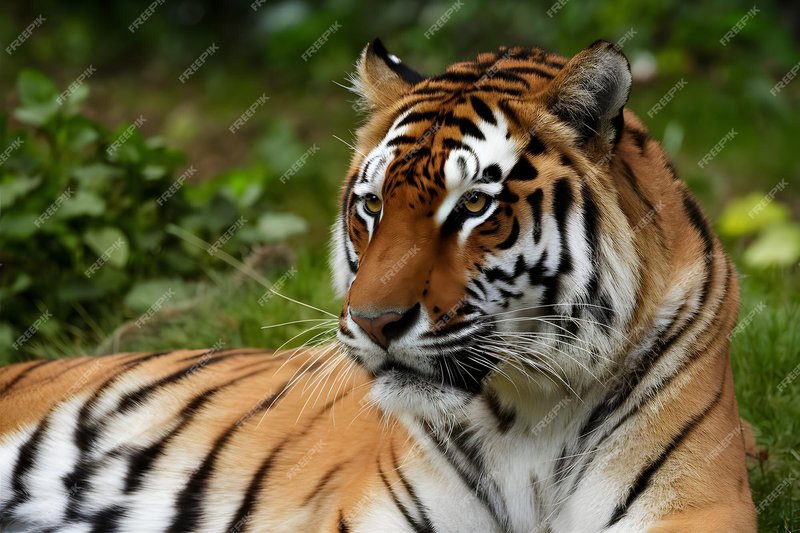
Bengal tigers are known for their hunting skills, but their intelligence runs deeper than just survival instincts. They have a complex range of behaviors that reflect their ability to think and adapt. Think of them as the problem-solvers of the wild, working with the resources at their disposal, whether that’s figuring out how to approach prey or dealing with other tigers in their vicinity. Let’s dive deeper into the world of Bengal tiger intelligence and behavior.
Understanding the Cognitive Abilities of Bengal Tigers
Bengal tigers are among the most intelligent big cats. Their cognitive abilities come into play in various aspects of their lives. Unlike some animals that rely solely on instinct, Bengal tigers show signs of learning and memory. For example, they are known to remember the locations of their prey and the best routes to ambush them. This is similar to how we remember shortcuts or preferred routes in our daily commutes.
Their intelligence allows them to adapt their hunting strategies based on the environment. For instance, if they notice their typical prey is scarce, they will modify their behavior—perhaps hunting different animals or adjusting their hunting times. This adaptability is a hallmark of intelligence, showcasing their ability to learn from experiences and make decisions based on those lessons.
Interestingly, Bengal tigers also exhibit problem-solving skills. In one study, researchers observed how tigers navigated obstacles to reach food. These tigers demonstrated the ability to assess a situation and choose the most effective method to get what they wanted. This kind of reasoning is often seen in more socially complex animals, indicating that tigers are far more than just instinct-driven hunters.
The Role of Social Behavior in Tiger Intelligence
You might be surprised to learn that Bengal tigers are solitary animals, but this doesn’t mean they lack social intelligence. Understanding territory and social hierarchy is crucial for their survival. They use vocalizations, scent markings, and even body language to communicate with others. This is somewhat like how we use subtle cues in conversation to convey meanings beyond words.
When it comes to mating, Bengal tigers exhibit remarkable social skills as well. They will communicate their presence and engage in courtship behaviors, which can be seen as a form of negotiation. This ability to interact with potential mates and establish connections reflects a level of social intelligence necessary for species continuation.
Bengal tigers also learn from each other, especially when it comes to raising cubs. Mother tigers are protective and will teach their young about hunting and territory. This transfer of knowledge is vital for the cubs’ survival, as they must navigate the complexities of their environment.
Communication Styles: More Than Just Roars
When you think of a tiger’s communication, you probably imagine a deep, resonating roar. While that’s certainly part of it, Bengal tigers have a rich array of vocalizations and body language that reflect their intelligence. They use different sounds for various situations, such as signaling distress or marking territory.
For example, tigers may use low growls when they are threatened or high-pitched calls to attract mates. This kind of varied communication is essential in the wild, much like how we adapt our tone and language depending on the audience. Their ability to convey different emotions and intentions through sound is a sign of sophisticated mental processing.
Body language is another vital part of how Bengal tigers communicate. From the way they position their ears to how they hold their tails, these signals convey crucial information. A tiger might arch its back and puff out its fur to appear larger when feeling threatened. This visual communication is as important as their vocalizations and requires a keen sense of awareness and interpretation.
Learning and Memory: The Building Blocks of Intelligence
Learning from experience is a key aspect of Bengal tiger intelligence. They have excellent long-term memory, which helps them remember locations of food sources, shelters, and other important landmarks within their territories. This capability is much like how we remember important places and past experiences, allowing us to navigate our world effectively.
Studies show that tigers can even learn from observing others, particularly their mothers when they are cubs. For instance, a young tiger might watch its mother stalk prey, learning valuable techniques that it can apply later. This kind of observational learning is a significant part of developing their hunting skills and understanding their environment.
In captivity, researchers have noted that Bengal tigers can be trained with positive reinforcement. They respond well to rewards for completing tasks, which indicates they can understand and remember commands. This ability to learn and adapt shows that their cognitive skills extend beyond just survival; they can also cultivate new skills through experience.
Comparing Intelligence: Bengal Tigers vs. Other Big Cats
So, how do Bengal tigers stack up against other big cats like lions or leopards in terms of intelligence? While each species has unique adaptations and behaviors, Bengal tigers are often seen as more solitary and independent thinkers. This is crucial for their survival in the dense jungles and forests they inhabit.
Lions, being social animals, rely on their pride for hunting and protection. Their intelligence is geared towards cooperation and social dynamics. In contrast, Bengal tigers must rely on their wits and skills as solitary hunters. This doesn’t mean one is better than the other; it’s just a reflection of their different lifestyles.
Leopards demonstrate a different kind of intelligence as well, often using stealth and adaptability to thrive in urbanized areas. This opportunistic behavior shows their ability to learn and change based on their surroundings. While Bengal tigers are perhaps more strategic in their hunting methods, leopards exhibit remarkable problem-solving skills too.
Challenges: The Impact of Habitat Disruption on Tiger Intelligence
Unfortunately, habitat loss and poaching pose significant threats to Bengal tigers and their intelligence. As their habitats shrink due to human development, they face increased challenges in finding food and mates. This can affect their ability to learn and adapt to new situations, essentially stunting their cognitive growth.
Moreover, the stress of living near human populations can alter their natural behaviors. With fewer resources and increased competition, Bengal tigers may struggle to exhibit their full range of cognitive abilities. It’s a bit like when we face constant distractions and stress in our lives, making it harder to think clearly and adapt to new challenges.
Understanding the cognitive capacities of Bengal tigers highlights the importance of conservation efforts. By protecting their habitats and ensuring they have the resources they need, we can help these intelligent creatures continue to thrive and exhibit their remarkable behaviors.
Bengal tigers are not just symbols of strength and beauty; they are also intelligent creatures with a fascinating range of cognitive abilities. Their skills in problem-solving, communication, and adaptation showcase a level of intelligence that parallels some of the more traditionally recognized smart animals.
As we explore the depth of their intelligence, it becomes clear that Bengal tigers are more than just solitary hunters; they are complex beings capable of learning, adapting, and thriving in their environments. Protecting their habitats and understanding their behaviors will ensure that these magnificent creatures continue to roam the earth as the intelligent beings they are.
So next time you think about a Bengal tiger, remember that there’s a lot more going on in that beautiful mind than just instinct-driven behavior. It’s a world full of learning and adaptation, deserving our respect and protection.

